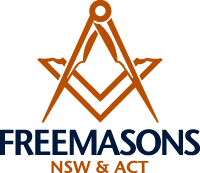
The old tin shed

Loved it or hated it, you can blame or praise the Eastern Suburbs Railway for the demise of the old Sydney Stadium.
It was located at the corner of New South Head Road and Neild Avenue, Rushcutter’s Bay; now the railway line runs elevated across the site.
While it was still operating and before the opening of the Entertainment Centre in Ultimo, it was the premium venue for a ‘big night out’, whether for a prize fight, wrestling, roller derbies, religious revivals, international showbiz personalities, jazz or pop concerts. Many acclaimed international and local personalities performed there.
In mid 1908 the Sydney boxing promoter Hugh Macintosh leased a former Chinese market garden in Rushcutter’s Bay at £2 per week for three years. He quickly erected a roughly circular, open-air hippodrome of corrugated iron and timber, later nicknamed ‘the Old Tin Shed’, with a capacity of 10,000–15,000 people. Hoping to take advantage of the impending arrival of the American Great White Fleet, and its sailors with spending money, he opened the venue with a few exhibition boxing matches.
The first major bout, timed for the fleet arrival, was between the Canadian world heavyweight champion Tommy Burns and Australian champion Bill ‘Boshter’ Squires, which Burns won by a knockout in the thirteenth round. It netted Macintosh £13,500, which would be in excess of a million dollars today.
On Boxing Day in 1908, Burns defended his title at the Stadium against the leading contender, the legendary Afro- American Jack Johnson. Great interest was shown in Sydney for the fight due to the general appeal of American people and effects following the visit of the American Fleet. In addition Johnson was a novelty due to his ethnic background, and there were some racist anxieties about the possibility of a Burns defeat by a ‘coloured’ fighter. The fight was stopped by police in the fourteenth round with Burns knocked out, and the referee awarded the title to Johnson on ‘points’.
Despite the anxieties, the result did not cause the world to come to an end!
The Stadium was roofed in 1911 after a boxer had almost drowned in the ring when he was knocked out and fell face down in a large puddle. In 1912 the Stadium was acquired by Macintosh’s partner Reginald ‘Snowy’ Baker and his brother Harald. The Baker brothers formed a new company, Stadiums Pty Ltd to run this, and the Melbourne and Brisbane Stadiums. Richard Lean and the notorious John Wren were the other main share- holders. The First World War caused the Stadium to be closed in 1916, and it did not reopen until 1919.
Wrestling was added and the Stadium was operating almost every night of the week, and became one of the most popular entertainment venues in Sydney from the 1920s until its closure in 1970. Many world championship boxing and wrestling bouts were held there. Some famous Australian boxers who fought at the Stadium were Jimmy Carruthers, Les Darcy, Johnny Famechon, Vic Patrick, Lionel Rose, and Dave Sands.
Some people used to go to the Stadium most Thursday nights for the wrestling, also on some Monday nights to see the boxing, and later for international productions. For those living in the South, they would take the train to St James and then walk through Kings Cross to the Stadium. The sixpence saved was enough to buy the ‘mandatory’ pie there. If it was wet they took the tram, and walked through the tunnel to the entrances, some- times arriving at the Stadium in time to be first or second in line for the cheap outer section of seating, and go to a favourite seat which gave an uninterrupted view. Obviously, they would always take the tram back to St James, as the entertainment finished late at night.
From 1955 the Stadium was used increasingly for music and stage productions as it was the only indoor venue in Sydney capable of handling large crowds at that time. The expatriate American promoter Lee Gordon was mainly responsible for the change of use. He attracted many major international stars to perform at the Stadium, as well as rising talent in the local scene. Some of the most famous jazz artists of the day and popular singing stars including Frank Sinatra, Dakota Staton and Johnny Ray were presented there.
Famous Freemasons who performed at the Stadium included Bud Abbott and Lou Costello, Nat King Cole, Red Skelton and Vic Patrick.
Article extracted from Freemason magazine, March 2014, pages 36 and 37.


